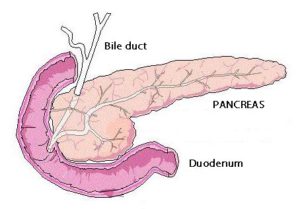Introduction
By Anders Molven, Gade Laboratory for Pathology, University of Bergen, Norway
The pancreas serves both exocrine and endocrine functions in the body. Most of the organ’s mass consists of acinar and ductal cells, the exocrine tissue that produces digestive enzymes and delivers them to the alimentary tract. The endocrine cells are found in the islets of Langerhans, which are dispersed as small, bead-like structures throughout the pancreas. The islets secrete the glucose-regulating peptides insulin and glucagon and other hormones.
The pancreas is central in the pathogenesis of diabetes, a very common disorder with increasing prevalence worldwide and where chronically high blood sugar is the hallmark. Acute and chronic inflammations constitute another group of pancreatic disorders. The third main group is pancreatic cancer which is a very serious disease as it can be cured only in few patients. Hence, pancreatic cancer is now the fourth leading cause of cancer deaths in the Western world although tumors occur much more frequently in many other organs of the body.
We study both endocrine and exocrine diseases of the pancreas at the molecular level. The research is divided into four main projects:
1) Molecular mechanisms in pancreatic adenocarcinoma
2) Carboxyl ester lipase in chronic pancreatitis and MODY8
3) Genetics of congenital hyperinsulinism of infancy
4) Causes of monogenic diabetes
Potential master, PhD and exchange students are welcome to contact our group at any time.
Our research group in Bergen, Norway hosted the 51st Annual Meeting of the European Pancreatic Club in June 2019. There were 670 participants from over 40 different countries. The program booklet can be downloaded here: EPC2019
We have published a review in Pancreatology on the CEL gene in pancreatic diseases. It can be accessed here. To see all publications by A. Molven, click here:
Our research is or has been supported by
- Research Council of Norway
- Novo Nordisk Fonden
- Norwegian Cancer Society
- Western Norway Regional Health Authority
- Stiftelsen Kristian Gerhard Jebsen
